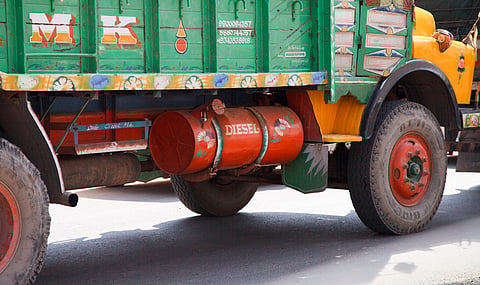

India’s transition to zero-emission trucking is facing a classic chicken-and-egg dilemma—should infrastructure come first or should demand lead the shift?
Speaking at a CEO roundtable on accelerating Zero Emission Trucks (ZET) organised by Rocky Mountain Institute (RMI) and the Union Ministry of Road Transport and Highways (MoRTH), experts, industry leaders and original equipment manufacturer (OEMs) emphasised that unlike many past industrial disruptions led by supply, the transformation to electric heavy commercial vehicles will need to be driven by demand aggregation.
This assumes significance as almost 40 per cent of emissions come from the trucking sector, as far as the transport sector-led emissions are concerned. Therefore, it’s important to consistently work towards cleaning of the transport sector, particularly for zero emission trucks.
The demand for truck movement in India will rise to 17 million by 2050 from 4 million in 2022, according to Truck Stock.
With 85 per cent ZET sales by 2050, India can abate 2.8 gigatons of CO2 emissions, reduce particulate matter (PM) and nitrous oxide (NOx) pollution by 40 per cent, unlock 17 per cent savings in logistics costs due to lower fuel consumption, displace 993 billion litres of diesel import, save Rs 116 trillion and create battery demand of 4,000 GWh, said an RMI report launched at the conference in New Delhi.
ZET refers to freight transportation using vehicles like battery-electric or hydrogen fuel cell trucks that produce no tailpipe emissions, unlike traditional diesel trucks. This shift towards ZET is driven by the need for cleaner transportation and aims to reduce greenhouse gas emissions and improve air quality.
Industry players argued that once there’s concentrated demand in specific freight corridors, investments in infrastructure such as charging stations will follow.
Although electric vehicle (EV) technology has been there for a few years now, the ecosystem enabling its widespread adoption is only now beginning to form, propelled by climate change imperatives and advances in battery technology. However, significant barriers remain, such as high logistics cost, the lack of regulation for heavy-duty EV charging infrastructure and high battery prices.
Current electric trucks (e-trucks) in India offer modest ranges of 180-200 km without compromising payloads, but future long-haul needs will require advances in battery energy density and chemistry. Simply increasing battery size is not feasible, as it raises both vehicle costs and charging times, they said.
A critical challenge highlighted is the high cost of electricity on highways—reaching up to Rs 20 per unit in some states. By contrast, EV-specific tariffs ranging from Rs 4–Rs 6 in certain regions offer a significant opportunity to bring the operating cost of e-trucks closer to parity with diesel.
They also see improving charger utilisation as key to driving down cost per kilometre.
Experts called for a coordinated effort involving government support, particularly in incentivising demand from sectors like cement, steel, and e-commerce.
With India aiming to be energy independent by 2047, as envisioned by the Prime Minister Narendra Modi, scaling up green fuels like electricity and hydrogen is not just a climate necessity but a strategic economic move.
To unlock this transition, stakeholders emphasised the need for policy clarity, capital mobilisation, and early demand aggregation—especially in predictable freight segments—to enable the ecosystem to take shape and scale quickly.
The Union Ministry of Heavy Industries (MHI) has identified 20 key corridors for developing the ZET ecosystem in the country. “And it’s encouraging to see the resemblance and seeing that the 10 corridors which we have identified are also appearing in 20 corridors identified by MHI,” Mahmood Ahmed, additional secretary of MoRTH, said, adding that the ministry is looking forward to rolling out more of these pilot corridors.
He said such corridors are important for enabling the ecosystem. “We will provide the data for creating or devising more such mechanisms for cleaning of the waste sector.”